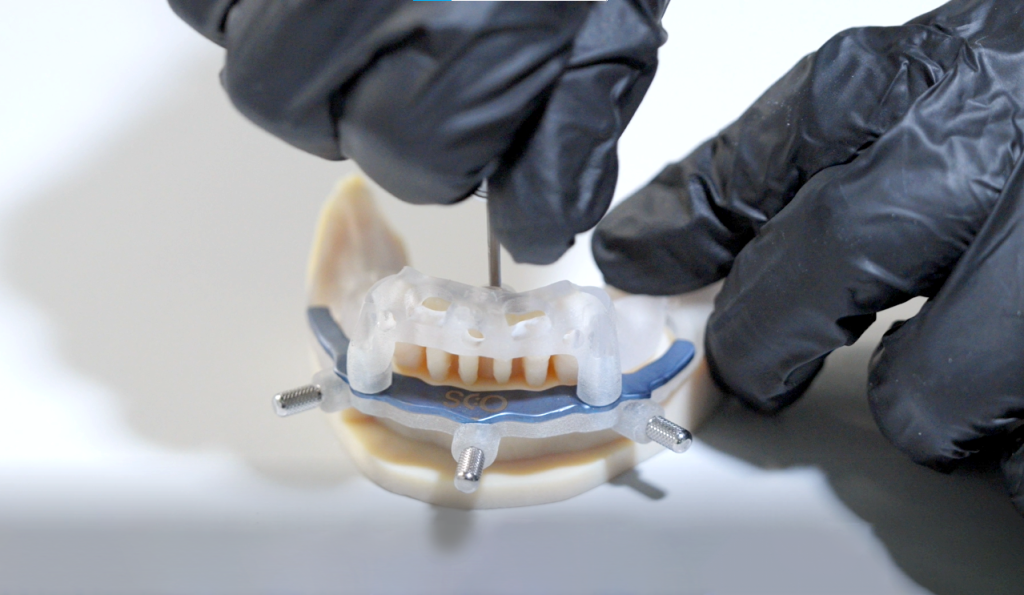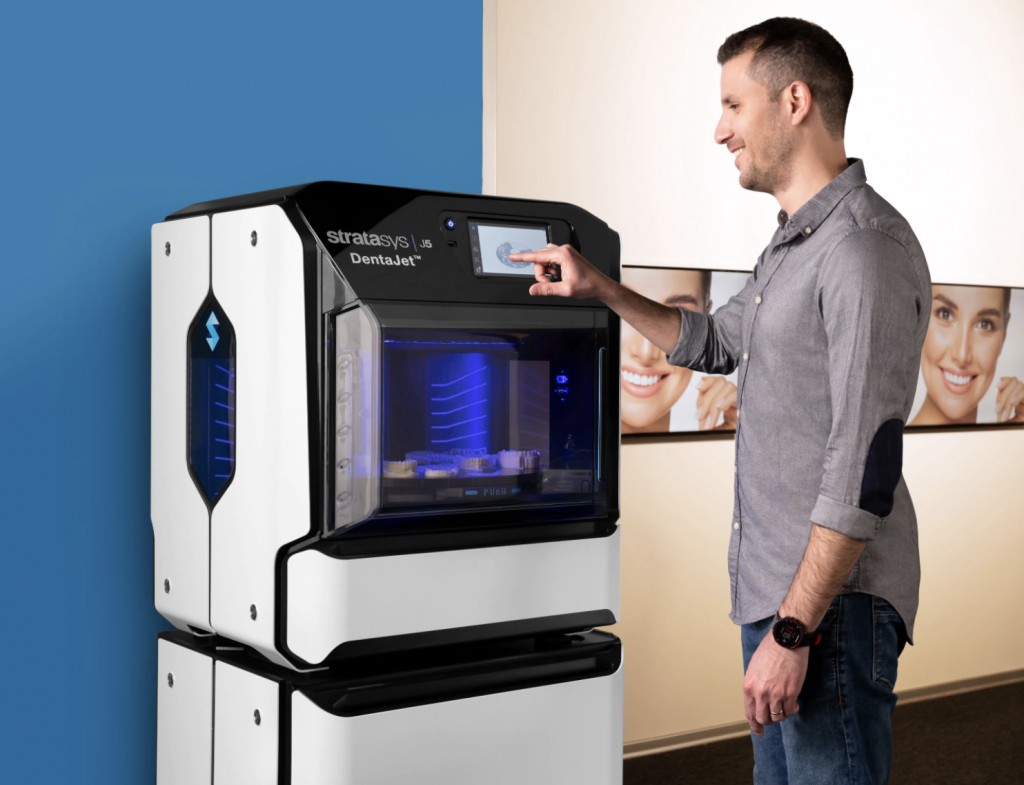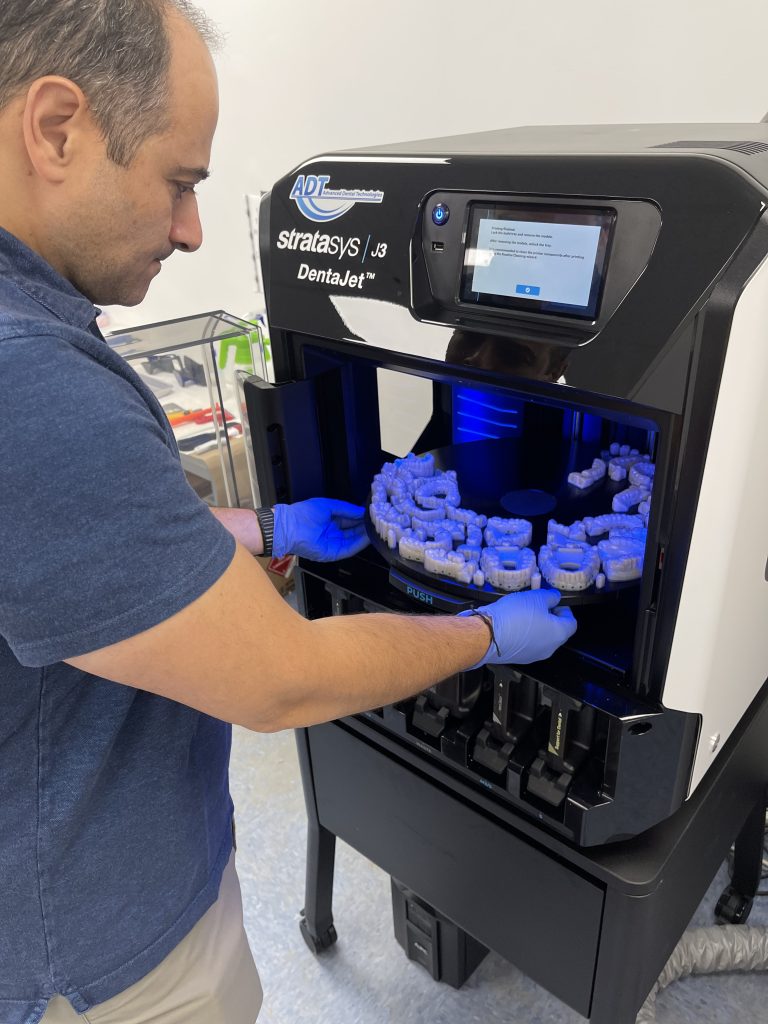Israel-based 3D printer manufacturer Stratasys has announced that its professional-grade multi-material DentaJet 3D printer series is gaining traction among customers in the dental industry.
According to Stratasys, a number of dental labs around the world, including in countries such as the US, France, and Germany, have recently adopted DentaJet 3D printers.
This announcement follows the launch of Stratasys’ entry-level J3 DentaJet 3D printer earlier this year. This 3D printer compliments the company’s more advanced J5 DentaJet model.
DentaJet 3D printers are said to offer increased quality and high accuracy for dental applications, whilst optimizing overall production efficiencies.
“DentaJet printers are proving ideal for dental applications, given the complex geometries and variety of materials required,” commented Ronen Lebi, Vice President of Dental at Stratasys. “With its robust catalog of strengths spanning unrivaled accuracy to superior color realism, the technology not only unlocks important advantages across various applications, but crucially provides a versatility that is critical in any modern, competitive and fast-paced dental environment.”

Stratasys’ DentaJet 3D printer series
The DentaJet 3D printer series, which includes the entry-level J3 and more advanced J5 models, leverages Stratasys’ digital workflow. These 3D printers are said to enable unattended 3D printing and minimal post-processing to address the evolving production needs of dental labs.
According to Stratasys, the DentaJet series provides a tailored solution for dental applications, offering high accuracy, color realism, and durability. Indeed, these 3D printers allow for the simultaneous production of multi-material, high-quality models, surgical guides and soft gingiva masks in a single tray.
“We’ve paired these printers with a seamless digital workflow that ensures dental labs quickly see the business benefits while better serving their own customers; that’s why we’re seeing such rapid adoption around the world,” commented Lebi.

New dental customers around the world
One new dental customer to have recently acquired DentaJet 3D printing technology is Advanced Dental Technologies (ADT), a full-service lab based in Boston. This company has purchased the new J3 DentaJet 3D printer, which it uses to produce crown and bridge, removable, and implant models.
Manufacturing on Demand
ADT owner Dany Karam stated that “We’re really thrilled with the J3’s output quality, and the ability to undertake multi-material printing has made our workflow so much easier and faster.”
“We own several 3D printers, but this is by far the team’s favorite. We were able to streamline and simplify the process from multiple prints every day to a more streamlined, efficient workflow and environment in the lab, helping us reduce cost by eliminating unnecessary overtime,” added Karam. “What would have previously taken three days, we can now do in a day, with greater accuracy and at a fraction of the cost.”
Stratasys’ J5 DentaJet 3D printer has also recently been purchased by French dental lab Ident’M. The company is now running the 3D printer 20 hours a day to produce around 1,000 dental parts on a monthly basis. What’s more, the J5’s 18 micron accuracy is said to be crucial in achieving Ident’M’s high-precision requirements.
“This 3D printer’s precision is simply unachievable with any other technology today. Thanks to the level of accuracy, we have reduced chair time for patients for applications such as crown fittings which has led to very positive feedback from our customers,” commented Olivier Mangot, Co-director of Ident’M.
Mangot also noted that the J5 has improved productivity and enabled significant time savings at Ident’M. This is because full-color dental models can be 3D printed on a single J5 3D printer, rather than multiple 3D printers dedicated to different applications.
Germany-based dental lab MA CAD/CAM Service UG has also recently purchased a J5 DentaJet 3D printer. The company’s owner, Michael Anger, emphasized the value of the 3D printer’s precision, along with high productivity and quality aesthetics.
“Being able to print different materials and colors in one single print job, combined with minimal post-processing, has resulted in huge cost savings for us,” claimed Anger. “We’re now also able to present models to patients that are more aesthetically appealing as the printer can reproduce the colors from the oral scan.”

3D printing and dental applications
Stratasys is not the only company to expand its 3D printing technology into the dental industry. Microscale 3D printer manufacturer Boston Micro Fabrication recently made its debut in the dental sector by launching UltraThineer, the “world’s thinnest cosmetic dental veneer.”
These 3D printed veneers are produced using micro stereolithography (PµSL), and are designed to be three times thinner than their conventional counterparts. This novel 3D printing approach is said to significantly reduce the preparatory steps required by dental practitioners. The UltraThineer veneers are expected to enter the US market by spring 2024, but are yet to be evaluated by the US Food and Drug Administration (FDA).
Elsewhere, multinational printing firm HP’s 3D printing technology is also being utilized within the dental industry. For instance, Smile Direct Club, a US-based dental aligner manufacturer, leverages 60 HP Jet Fusion 3D printers at their “Smile House” facility near Nashville. These 3D printers are used in the serial manufacturing of customer-specific molds, which are later applied to create clear plastic aligners.
You might also like:
BMF launches the world’s thinnest cosmetic dental veneer offering a minimally invasive treatment option: Utilizing projection micro stereolithography (PµSL), the recently introduced 3D printed veneers are tailored to be three times thinner than their conventional counterparts. This novel approach drastically reduces the preparatory steps required by dental practitioners. The UltraThineer veneers are anticipated to enter the U.S. market by spring 2024, contingent upon the evaluation by the U.S. Food and Drug Administration (FDA).
* This article is reprinted from 3D Printing Industry. If you are involved in infringement, please contact us to delete it.
Author: Alex Tyrer-Jones

Leave A Comment